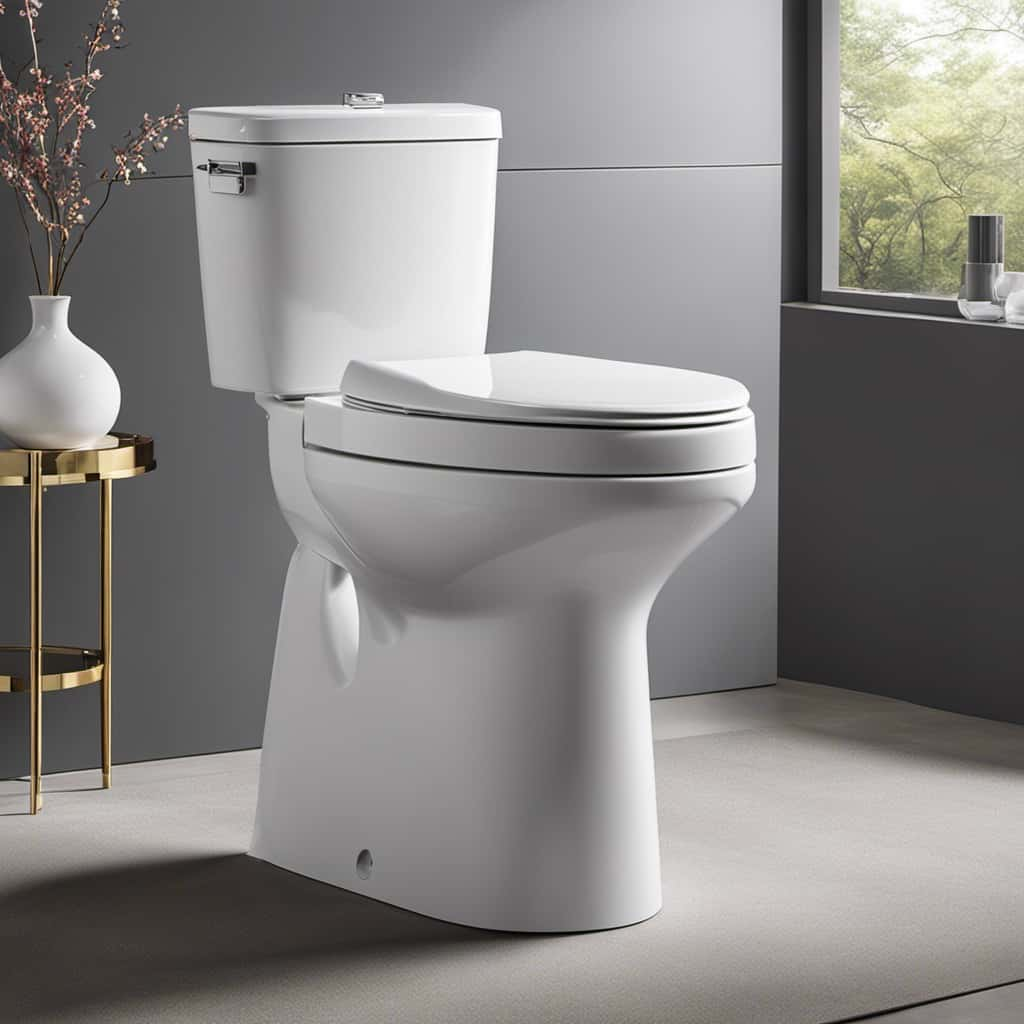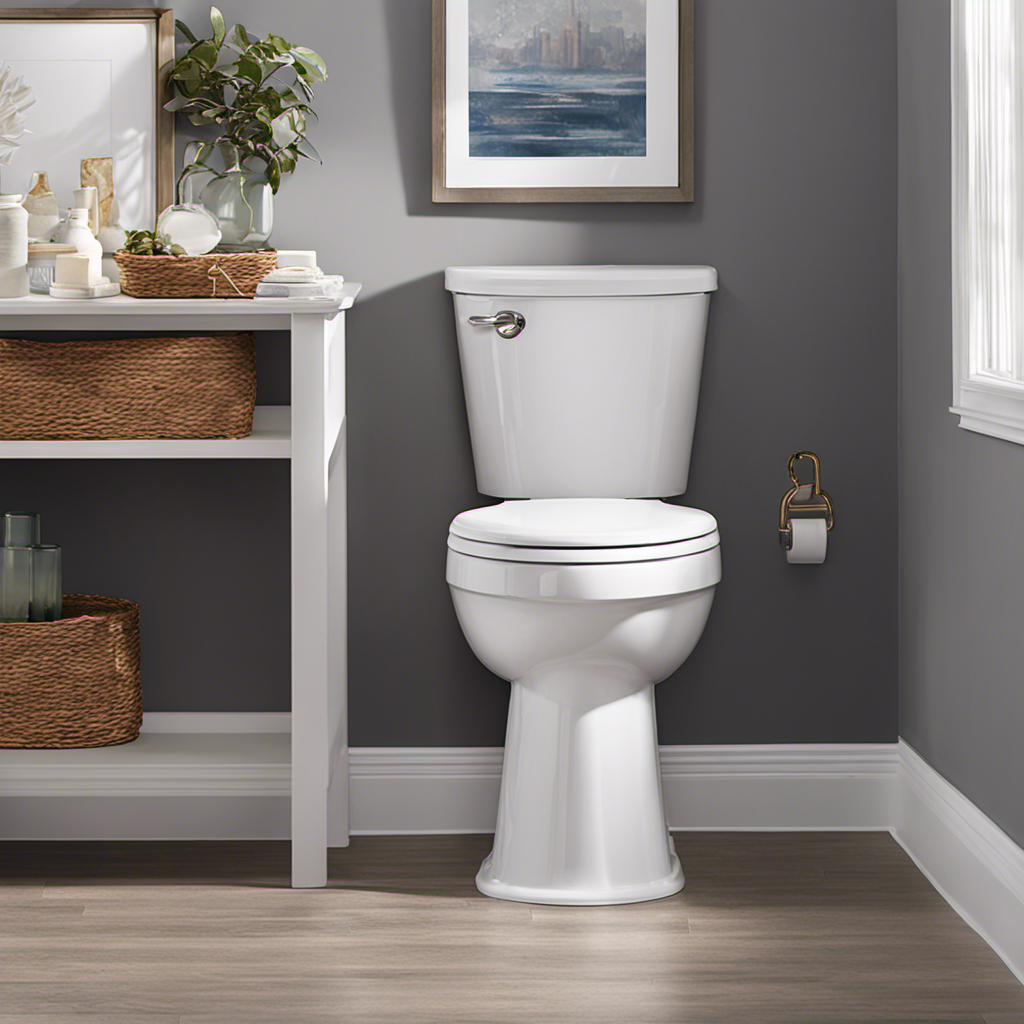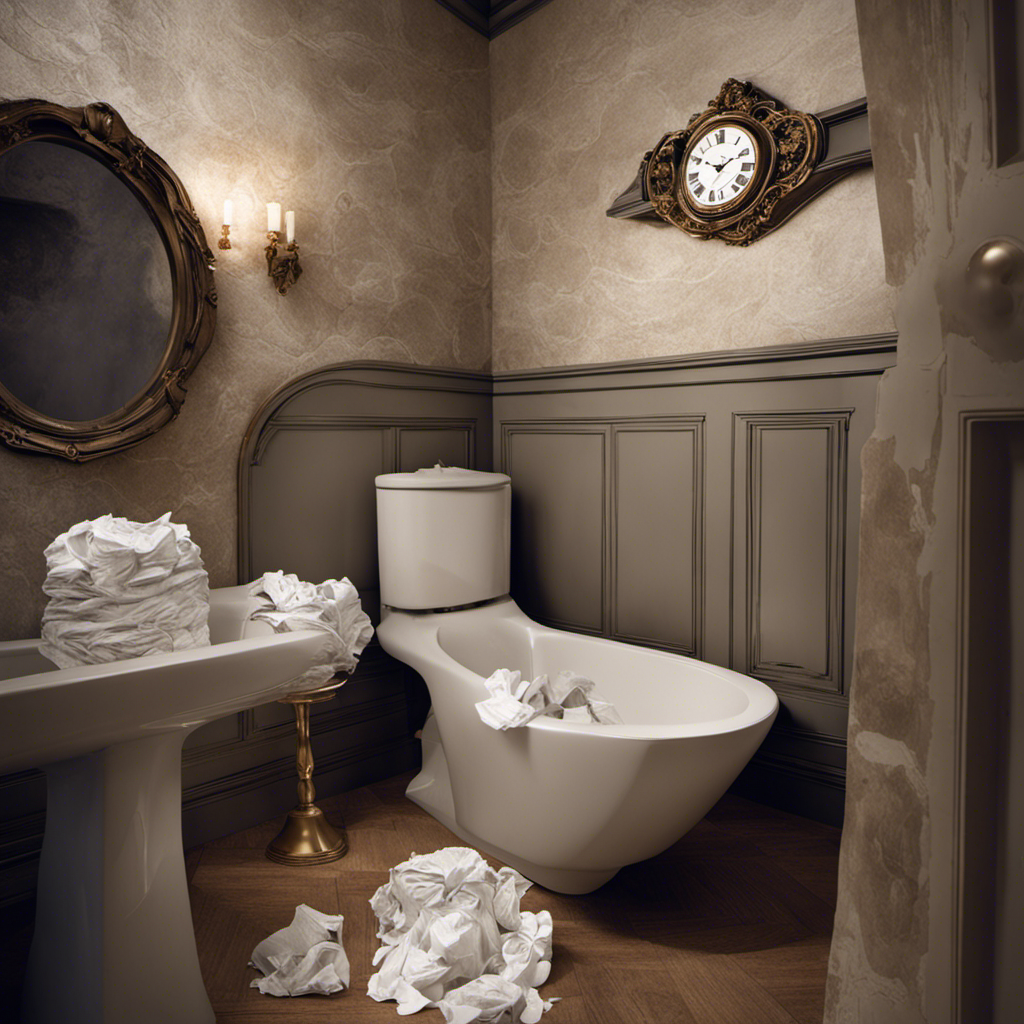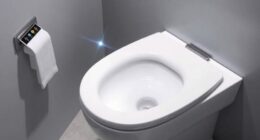Are you fed up with toilets that just won’t flush, no matter how hard you try? Don’t worry, DIY lovers! This article is going to dive into different methods for effectively clearing those stubborn blockages.
From the tried and true method of using a plunger to more advanced solutions like hot water and dish soap or a toilet auger, we’ll cover it all.
So, buckle up and get ready to master the art of force-flushing your toilet like a pro!
Key Takeaways
- Force flushing a toilet can lead to an increased risk of overflow and potential damage to the bowl or tank.
- It is important to avoid using chemical drain cleaners as they can aggravate existing plumbing issues and may result in water damage to the bathroom floor.
- Seeking professional diagnosis and repair is crucial to properly identify the underlying issue, prevent further damage to the plumbing system, and avoid potential health hazards.
- Following recommended maintenance practices can help prevent future toilet problems and extend the lifespan of the toilet and plumbing system.
Plunger: the Tried and True Method
The plunger is an essential tool for unclogging toilets. When it comes to toilet clog prevention and solving common toilet flushing problems, the plunger is a tried and true method that every homeowner should have on hand.
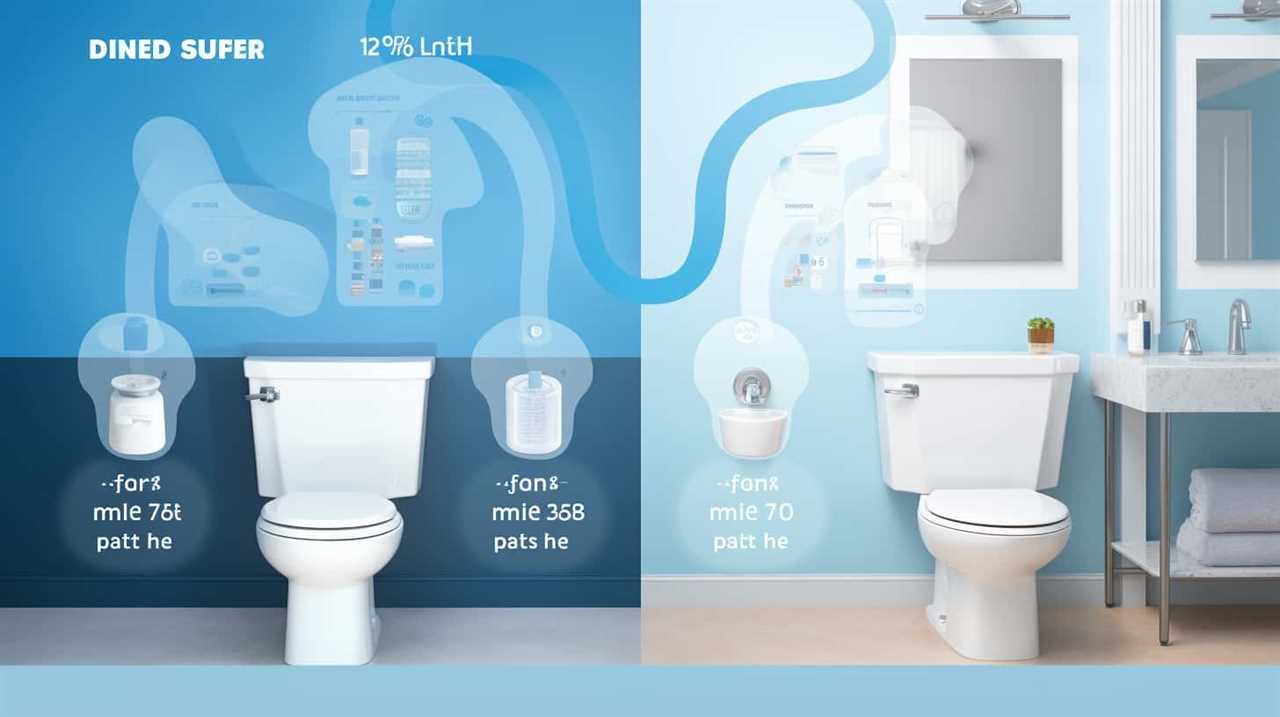
With its simple design and powerful suction, the plunger is effective in dislodging and breaking up clogs in the toilet drain. To use the plunger effectively, place the rubber cup over the drain opening and push down firmly, creating a tight seal. Then, rapidly plunge up and down to create pressure and suction that will dislodge the clog. Repeat this process until the water starts to drain properly.
However, if the plunger doesn’t solve the problem, there’s another DIY solution that you can try: hot water and dish soap.
Hot Water and Dish Soap: a DIY Solution
To unclog a toilet using a DIY solution, we can start by using hot water and dish soap. This method is one of the most popular DIY toilet unclogging hacks and is known for its effectiveness. The hot water helps to break down any blockages, while the dish soap acts as a lubricant, making it easier for the clog to slide through the pipes. Here is a simple step-by-step guide on how to use hot water and dish soap to unclog a toilet:
| Step | Instructions |
|---|---|
| Step 1 | Start by heating a pot of water on the stove until it is hot, but not boiling. |
| Step 2 | Add a generous amount of dish soap to the toilet bowl. |
| Step 3 | Carefully pour the hot water into the toilet bowl, aiming for the center of the clog. |
| Step 4 | Allow the mixture to sit for a few minutes, then flush the toilet to see if the clog has cleared. |
Using natural remedies for unclogging toilets can be an effective and cost-efficient solution. Give this DIY method a try before resorting to more drastic measures.

Toilet Auger: Taking It up a Notch
Now let’s take our unclogging efforts up a notch with a toilet auger. A toilet auger, also known as a closet auger, is a specialized tool designed to clear stubborn clogs in your toilet. It consists of a long, flexible cable with a coiled end and a handle at the other end.
To use it effectively, start by inserting the coiled end into the drain opening of the toilet bowl. Gently push the cable down while turning the handle clockwise. Avoid using excessive force to prevent damaging the toilet. Once you feel resistance, continue rotating the handle to break up the clog. Common mistakes to avoid include using too much force and not fully inserting the auger into the drain.
By using a toilet auger correctly, you can effectively clear even the toughest toilet clogs.
With the toilet auger, we’ve covered the more manual methods for unclogging a toilet. However, if you’re looking for a quicker solution, you may consider chemical drain cleaners. But proceed with caution, as these products can be harsh and potentially harmful.

Chemical Drain Cleaners: Proceed With Caution
When using chemical drain cleaners, we should exercise caution due to their potential harshness and potential harm. While these cleaners can be effective in clearing clogs and restoring drain function, they also come with their fair share of pros and cons. It is important to be aware of the safety precautions when using chemical drain cleaners to minimize any risks involved.
Here is a table outlining the pros and cons of using chemical drain cleaners:
| Pros | Cons |
|---|---|
| Quick and easy to use | Harsh chemicals can damage pipes |
| Can effectively dissolve clogs | Potential harm to skin and eyes |
| Widely available and affordable | Harmful fumes and odors |
| Can be used for preventive maintenance | Environmental concerns |
To ensure safe usage, it is essential to follow these safety precautions:
- Read and follow the instructions provided by the manufacturer.
- Use protective gloves and eyewear to prevent skin and eye contact.
- Avoid mixing different types of drain cleaners.
- Keep the area well-ventilated to minimize exposure to fumes.
Professional Assistance: When All Else Fails
If all other methods have been unsuccessful, it may be necessary for us to seek professional assistance for force flushing a toilet. When faced with a stubborn clog or a toilet that refuses to flush, calling for help from an emergency plumber is often the best course of action.

Here are two scenarios where professional assistance becomes crucial:
- The clog is deep within the plumbing system, and our efforts haven’t resolved the issue. In this case, an experienced plumber will have the necessary equipment and expertise to locate and remove the blockage effectively.
- The toilet is exhibiting signs of a more serious problem, such as a malfunctioning flush valve or a damaged sewer line. These issues require professional diagnosis and repair to prevent further damage to the plumbing system.
Frequently Asked Questions
Can I Use a Plunger on a Clogged Sink?
Yes, you can use a plunger on a clogged sink as one of the plunger alternatives for unclogging a bathroom drain. It is a simple and effective method to dislodge blockages.
What Should I Do if Hot Water and Dish Soap Doesn’t Work?
If hot water and dish soap don’t work to unclog a toilet, there are alternative methods to try. If the clog persists, we should assess the situation and consider using a plunger or a toilet auger.
Can a Toilet Auger Damage the Pipes?
Yes, a toilet auger can potentially damage pipes if used improperly. It is essential to follow instructions carefully. To prevent toilet clogs, consider using alternative methods such as a plunger or a drain snake.

Are Chemical Drain Cleaners Safe for Septic Systems?
Chemical drain cleaners can be harmful to septic systems. It’s important to understand the potential risks and consider alternative methods for unclogging drains. Proper maintenance and regular pumping are key to septic system safety.
How Much Does Professional Assistance for a Clogged Toilet Usually Cost?
The cost of a plumber for a clogged toilet can vary, depending on the severity of the issue and the plumber’s rates. DIY unclogging methods may be cheaper, but professional assistance ensures a thorough and effective solution.
Conclusion
In conclusion, when faced with a stubbornly clogged toilet, there are several methods to force-flush it.
From using a plunger to hot water and dish soap, a toilet auger, or chemical drain cleaners, there are DIY solutions available.
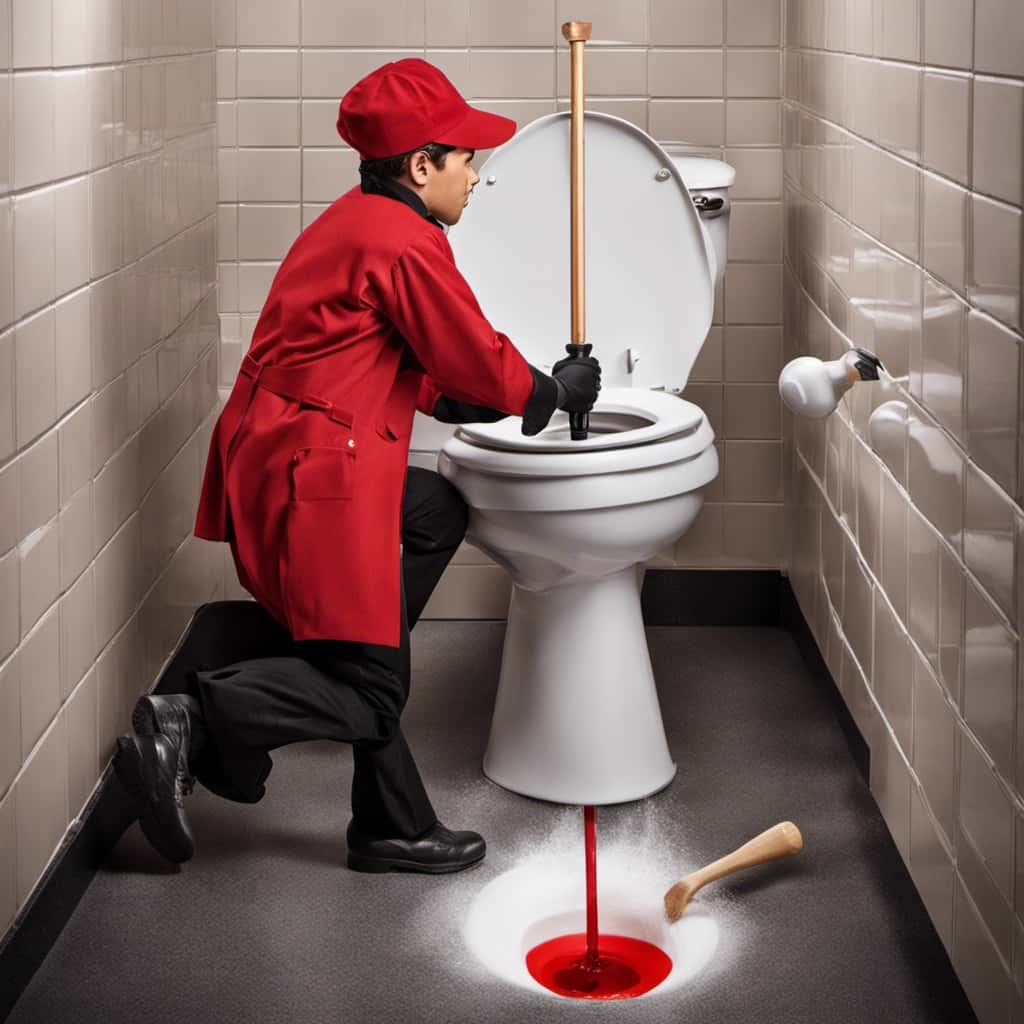
However, if all else fails, it may be necessary to seek professional assistance.
Remember, a clogged toilet is no match for our determination and resourcefulness, as we plunge into the depths of the problem to find a swift resolution.
